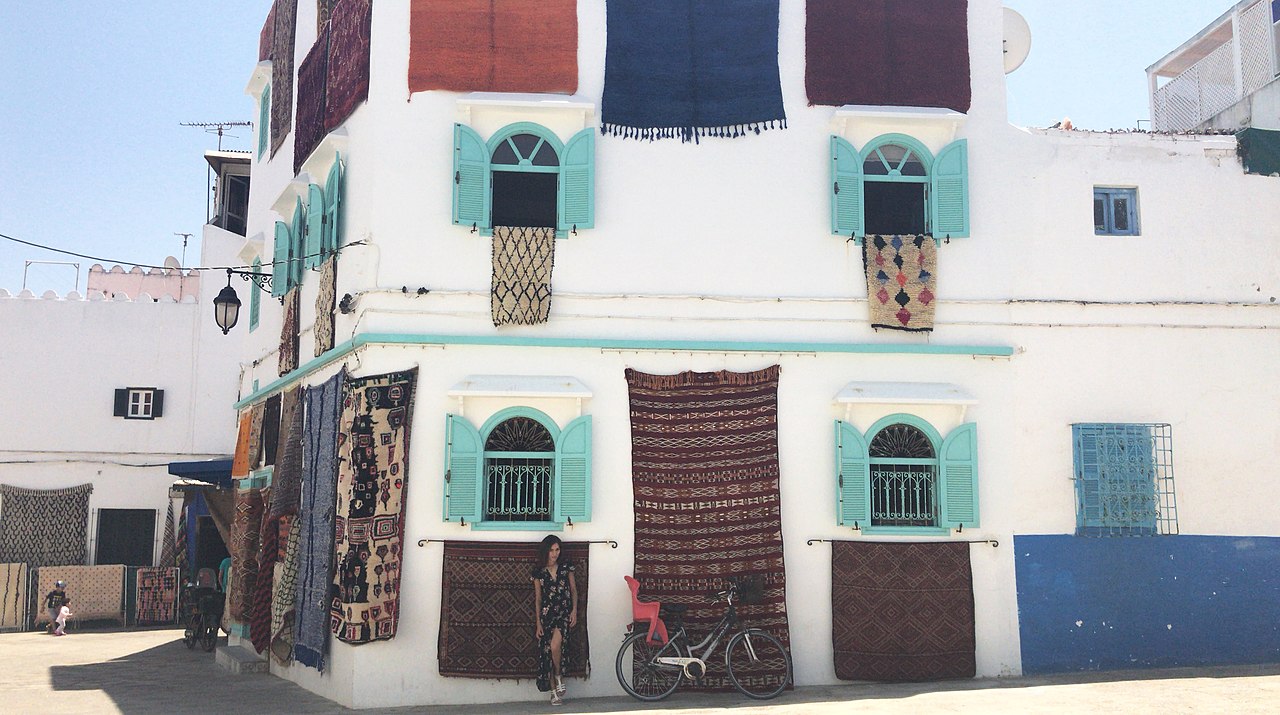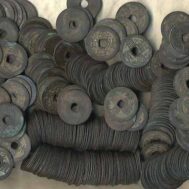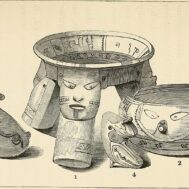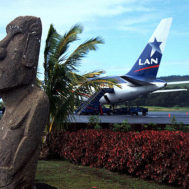UPDATE! The CPAC hearing on renewal of MOUs with Italy, Chile and Morocco and a new proposed MOU with Vietnam is now scheduled for May 20, 2025! Despite the manifold changes at the Department of State, this particular committee’s operational staff and its appointed members, representatives of the fields of archaeology, museums, the art trade and the public interest appears to have continued unchanged.
The public may provide written comment in advance of the meeting and/or register to speak in the virtual open session scheduled for May 20, 2025, at 2:00 p.m. EDT.
How to submit written comments: After weeks of problems and broken links on the Federal Register site, we’ve been informed that it is now working. Use the following link:
https://www.regulations.gov/document/DOS-2025-0003-0001. Please follow the prompts to submit written comments. Written comments must be submitted no later than May 13, 2025, at 11:59 p.m. EDT.
How to make oral comments: Make oral comments during the virtual open session on May 20, 2025 (instructions below). Requests to speak must be submitted no later than May 13, 2025, at 11:59 p.m. EDT.
Committee for Cultural Policy and Global Heritage Alliance – Written Testimony submitted to Cultural Property Advisory Committee, Bureau of Educational and Cultural Affairs, U.S. Department of State, on the Request for Renewal of Import Restrictions from the Kingdom of Morocco
The Cultural Property Advisory Committee at the Department of State has requested written public comment submitted regarding a hearing on a five-year extension of the existing MOU with Morocco. Extending the Morocco MOU would continue import restrictions on categories of archaeological material ranging in date from approximately one million B.C. to approximately 1750 A.D. and ethnological material from approximately 1549 to 1912 A.D.[1]
The Committee for Cultural Policy (CCP)[2] is an educational and policy research organization that supports the preservation and public appreciation of the art of ancient and indigenous cultures.
CCP supports policies that enable the lawful collection, exhibition, and global circulation of artworks and preserve artifacts and archaeological sites through funding for scholarship, excavation and site protection. CCP deplores the destruction of archaeological sites and monuments and encourage policies enabling safe harbor in international museums for at-risk objects from countries in crisis. CCP defends uncensored academic research and urges funding for museum development around the world. CCP believes that communication through artistic exchange is beneficial for international understanding and that the protection and preservation of art is the responsibility and duty of all humankind.
Global Heritage Alliance (GHA)[3] advocates for policies that will restore balance in U.S. government policy in order to foster appreciation of ancient and indigenous cultures and the preservation of their artifacts for the education and enjoyment of the American public. GHA supports policies that facilitate lawful trade in cultural artifacts and promotes responsible collecting and stewardship of archaeological and ethnological objects.
The Committee for Cultural Policy and Global Heritage Alliance jointly submit this testimony on the Renewal of the Memorandum of Understanding (MOU) and the imposition of import restrictions between the United States and the Kingdom of Morocco.
Summary
Morocco is yet another country in which the CPIA’s goal of preserving archaeological heritage and the integrity of archaeological sites has been replaced with nationalist government goals of promoting archaeological tourism.
Morocco has failed to provide sufficient evidence of a looting crisis to justify the proposed MOU under CPIA standards. Concerns about the last five years of the MOU include the overall lack of evidence of looting or trafficking, the Moroccan government’s neglect of self-help and self-policing measures, and overly broad U.S. import restrictions. The Committee for Cultural Policy urges a reevaluation of the MOU to focus on transparency, evidence-based determinations, and better alignment with U.S. cultural property policy.
Stakeholders in this proposed renewal include hundreds of U.S. small businesses which have traditionally sold Moroccan ethnographic items for home décor, and dealers in ancient coins which circulated widely throughout the Mediterranean and which are sourced and legally purchased in Europe and throughout the region. Auction houses and art dealers trading in Moroccan artifacts that have circulated legally for many decades and the institutional and private collectors they serve are also harmed by the current blanket restrictions.
Other communities who share in this public interest in the U.S. include museums, heritage associations, and religious communities, particularly members of the U.S. Jewish community whose roots and ancient home was in Morocco.[4] All these stakeholders have voiced urgent concerns about being excluded from meaningful participation in discussions regarding the original 2020 MOU with Morocco and about the excessively broad restrictions placed on Moroccan art and artifacts – which have not been associated with extensive looting in the postwar period.
Overbroad and Unjustified Restrictions
Morocco presently has import restrictions on an astonishingly wide range of “archaeological and ethnological material” representing its cultural patrimony. Such blanket restrictions contradict Congress’ intent under the Cultural Property Implementation Act (CPIA), which envisioned limitations only on rare, significant items under threat, not common or mass-produced objects.
Lack of Evidence for Looting or U.S. Trafficking
Morocco has not demonstrated that its cultural property is currently endangered by looting or illicit trafficking. Reports on looting and smuggling are scarce, with the most notable cases dating back to the 1990s. Recent market investigations reveal that Moroccan artifacts in the U.S. are typically low-value items such as jewelry, textiles, and manuscripts, with no evidence of illicit origins. Even prior to the imposition of U.S. import restrictions, the two largest auction houses, Sotheby’s and Christie’s, had sold no Moroccan antique or ancient artifacts for years. For the last decade, all major auction house sales consisted of minor objects – manuscripts and books or genre or landscape paintings by European artists, and all auctions took place in the United Kingdon, not the United States.
Flawed Evidence for Illicit Trade
Claims about illicit trade in Moroccan cultural goods over the Internet appear wildly exaggerated. Prior to execution of the 2020 MOU there were claims that seventeen alleged illicit sales of ancient and antique objects had been made on Facebook over a period of three years. These included items of dubious value or authenticity or were objects whose export was legal under Moroccan law. Offers of sale worldwide of seventeen objects from any country does not equate to ‘illicit trafficking of priceless antiquities’, as suggested by proponents of the MOU. There are even fewer of such sales today.
Coins do not belong on Designated Lists
CPAC should mandate a return to “fact-based decision making” and recommend de-listing all coin types except for the few ancient and Islamic local issues (mainly in bronze) that are only found in today’s Morocco. Further, the current Designated List is unduly broad and the coins listed go beyond Moroccan issues, listing coins that originated outside of Morocco and circulated widely in ancient times. Such listings fail to meet constitutional “fair notice” standards embedded in 19 U.S.C.§ 2604. If coins are listed at all on a future Designated List, the list should be redrafted so that, at most, only the limited number of ancient bronze coins issued for local circulation in Morocco are listed.
Morocco’s Neglect of Self-Help Measures
The CPIA requires countries seeking MOUs to demonstrate efforts to safeguard their own cultural property. Congress has emphasized the importance of self-help measures, including expenditures on securing and inventorying cultural sites. As noted above, Moroccan government activities have not been directed at preserving archaeological sites but rather to develop archaeological tourism.
Morocco does not appear to have taken even such basic steps in “self-help” as regulating metal detecting. It is virtually impossible to purposefully find coins without the use of metal detectors. If the Moroccan government took the practical and simple step of regulating the use of metal detectors, this would be the most effective way to halt any looting of coins for sale in Morocco or Europe or the U.S. It would help to preserve Moroccan sites intact and enable coins circulating or excavated long ago to be imported into the U.S. from legitimate markets in Europe. The government of Morocco has not taken this simple step.
Complex and Inconsistent Moroccan Laws
Morocco’s cultural property laws are complex, with overlapping amendments and unclear definitions of restricted items. The lack of alignment between these laws and the MOU proposal further complicates enforcement and compliance.
There are three Moroccan cultural property laws available on U.S. databases, each of which amends but does not replace the prior laws. Different legal regimes apply to “listed” or “classified” and “unlisted” movable and immovable objects in all three laws. The types of objects the laws cover change or are re-defined over time and it is not always clear (with the exception of excavated objects) which antique and ancient objects fall in to the listed and unlisted categories and which are inalienable and imprescriptible.
- Law 1.80.341 of 17 Safar 1401 (December 25, 1980).
- Law No. 2.81.25 of 23 Hijra 1401 (October 22, 1981) issued for application of Law No. 22.80.a
- Amended in 2006 by Royal decree no. 1-06 102 of 18 Joumada 1427 (June 15, 2006)
In general, Morocco allows private ownership of both antiques and antiquities, although transfer of certain objects must be documented, and the state given the option to purchase it when transferred. Excavated archaeological materials are automatically deemed state-owned. In 2006, the definition of movable property was refined to include “documents, archives and manuscripts who archaeological, historic, scientific, aesthetic, or traditional aspects are of national or universal value.”
Movable and immovable property may be ‘listed’ or ‘classified’ and thereafter be subject to requirements for documentation and/or restrictions on transfer (1980), but “movable objects belonging to individuals are subject to registration or listing with the agreement of their owner.” (1981)
If the government does list a privately-owned object or monument then it has the right to step in to preserve the property. If an unlisted property is endangered, the government may order automatic listing. A classified movable item may not be restored, mutilated, modified, destroyed, altered or exported. But – the total or partial declassification of an immovable item or the declassification of a movable item may be requested by the administrative authorities or by individuals. There are rights of pre-emption by government and a right for the government to purchase with compensation in narrow circumstances. These rights may also be waived by inaction. Owners of private museums must list their inventory. Museums, owners of collections, and individuals must allow access to their property for study. (2006)
Morocco has provided no explanation of how any items restricted under a U.S. MOU would correlate to these categories under Moroccan law. In general, it is the Committee for Cultural Property’s and Global Heritage Alliance’s position that no object that may be traded, transferred or sold legally in Morocco under its domestic laws should be illegal to import into the United States.
Conclusion
In all its cultural property agreements, the United States should embrace policies that truly lie in the interests of U.S. citizens, U.S. businesses, and U.S. public institutions. In his first announcement as Secretary of State, Secretary Marco Rubio stated that every U.S. State Department policy should be focused on the following:
Every dollar we spend, every program we fund, and every policy we pursue must be justified with the answer to three simple questions:
- Does it make America safer?
- Does it make America stronger?
-
Does it make America more prosperous?[5]
Renewal of the Moroccan MOU would not meet these policy goals. U.S. law and U.S. public interest is well expressed in the bipartisan legislation that governs cultural property, the 1983 Cultural Property Implementation Act.
Under the Act, import restrictions must be of substantial benefit in deterring looting and trafficking, and there must be evidence that the U.S. is a significant market for looted materials.
An MOU must also align with the international community’s interests in cultural exchange, but Morocco has not demonstrated willingness to participate in such efforts though museum loans and traveling exhibitions. Without such access, U.S. citizens who cannot travel to Morocco are denied that ability to appreciate its magnificent past and value positive relations with the Moroccan people. U.S. museums cannot educate the U.S. public about this rich history and generations of U.S. citizens of Moroccan heritage who have made the U.S. their permanent home are denied fundamental religious and cultural rights of access.
Kate Fitz Gibbon, Executive Director, Committee for Cultural Policy, Inc.
Elias Gerasoulis, Executive Director, Global Heritage Alliance, Inc.
[1] The State Department announcement refers to material culture from the Saadian and Alaouite dynasties, basically excluding only Moroccan carpets and certain Jewish religious implements.
[2] The Committee for Cultural Policy, POB 4881, Santa Fe, NM 87502. www.culturalpropertynews.org, info@culturalpropertynews.org.
[3] The Global Heritage Alliance. 1015 18lh Street. N.W. Suite 204, Washington, D.C. 20036. http://global-heritage.org/
[4] Letter to Secretary of State Mike Pompeo Regarding Cultural Property Agreements, Jimena, December 9, 2018, http://www.jimena.org/letter-to-secretary-of-state-mike-pompeo-regarding-cultural-property-agreements/
[5] Marco Rubio, Secretary of State, Press Statement, Priorities and Mission of the Second Trump Administration’s Department of State, January 22, 2025, https://www.state.gov/priorities-and-mission-of-the-second-trump-administrations-department-of-state/
 Antique carpet shop, Morocco, photo by Safaa2606, 28 June 2018, Creative Commons Attribution-Share Alike 4.0 International license.
Antique carpet shop, Morocco, photo by Safaa2606, 28 June 2018, Creative Commons Attribution-Share Alike 4.0 International license. 

